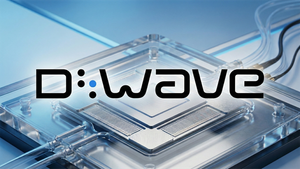
Let’s dig into the relative performance of Repligen (NASDAQ: RGEN) and its peers as we unravel the now-completed Q1 drug development inputs & services earnings season.
Companies specializing in drug development inputs and services play a crucial role in the pharmaceutical and biotechnology value chain. Essential support for drug discovery, preclinical testing, and manufacturing means stable demand, as pharmaceutical companies often outsource non-core functions with medium to long-term contracts. However, the business model faces high capital requirements, customer concentration, and vulnerability to shifts in biopharma R&D budgets or regulatory frameworks. Looking ahead, the industry will likely enjoy tailwinds such as increasing investment in biologics, cell and gene therapies, and advancements in precision medicine, which drive demand for sophisticated tools and services. There is a growing trend of outsourcing in drug development for nimbleness and cost efficiency, which benefits the industry. On the flip side, potential headwinds include pricing pressures as efforts to contain healthcare costs are always top of mind. An evolving regulatory backdrop could also slow innovation or client activity.
The 8 drug development inputs & services stocks we track reported a very strong Q1. As a group, revenues beat analysts’ consensus estimates by 4%.
In light of this news, share prices of the companies have held steady as they are up 4.1% on average since the latest earnings results.
Repligen (NASDAQ: RGEN)
With over 13 strategic acquisitions since 2012 to build its comprehensive bioprocessing portfolio, Repligen (NASDAQ: RGEN) develops and manufactures specialized technologies that improve the efficiency and flexibility of biological drug manufacturing processes.
Repligen reported revenues of $169.2 million, up 10.4% year on year. This print exceeded analysts’ expectations by 3%. Overall, it was a satisfactory quarter for the company with a solid beat of analysts’ organic revenue estimates but a miss of analysts’ full-year EPS guidance estimates.
Olivier Loeillot, President and Chief Executive Officer of Repligen said, “We had a strong start to the year with $169 million of revenue, which represented 14% organic non-COVID growth and helped drive meaningful adjusted operating margin expansion. Total orders grew nearly 20%, with all four franchises growing double-digits, highlighting the momentum in our business. As a result, we are confident in our organic growth outlook for the full year. Strategically, we strengthened our Analytics franchise with the acquisition of 908’s bioprocessing portfolio. Finally, we are working to navigate through the current economic environment and at this point in time, we see minimal impact from tariffs on our EPS.”

The stock is down 11.9% since reporting and currently trades at $126.55.
Is now the time to buy Repligen? Access our full analysis of the earnings results here, it’s free.
Best Q1: UFP Technologies (NASDAQ: UFPT)
With expertise dating back to 1963 in specialized materials and precision manufacturing, UFP Technologies (NASDAQ: UFPT) designs and manufactures custom solutions for medical devices, sterile packaging, and other highly engineered products for healthcare and industrial applications.
UFP Technologies reported revenues of $148.1 million, up 41.1% year on year, outperforming analysts’ expectations by 5.9%. The business had an incredible quarter with a solid beat of analysts’ EPS estimates.

UFP Technologies pulled off the fastest revenue growth among its peers. The market seems happy with the results as the stock is up 21.8% since reporting. It currently trades at $240.08.
Is now the time to buy UFP Technologies? Access our full analysis of the earnings results here, it’s free.
Slowest Q1: Azenta (NASDAQ: AZTA)
Serving as the guardian of some of medicine's most valuable materials, Azenta (NASDAQ: AZTA) provides biological sample management, storage, and genomic services that help pharmaceutical and biotechnology companies preserve and analyze critical research materials.
Azenta reported revenues of $143.4 million, up 5.2% year on year, exceeding analysts’ expectations by 2%. Still, it was a slower quarter as it posted a significant miss of analysts’ EPS estimates.
Interestingly, the stock is up 11.8% since the results and currently trades at $28.41.
Read our full analysis of Azenta’s results here.
Medpace (NASDAQ: MEDP)
Founded in 1992 as a scientifically-driven alternative to traditional contract research organizations, Medpace (NASDAQ: MEDP) provides outsourced clinical trial management and research services to help pharmaceutical, biotechnology, and medical device companies develop new treatments.
Medpace reported revenues of $558.6 million, up 9.3% year on year. This number beat analysts’ expectations by 6%. Overall, it was an exceptional quarter as it also put up an impressive beat of analysts’ organic revenue and EPS estimates.
The stock is up 8.5% since reporting and currently trades at $312.74.
Read our full, actionable report on Medpace here, it’s free.
IQVIA (NYSE: IQV)
Created from the 2016 merger of Quintiles (a clinical research organization) and IMS Health (a healthcare data specialist), IQVIA (NYSE: IQV) provides clinical research services, data analytics, and technology solutions to help pharmaceutical companies develop and market medications more effectively.
IQVIA reported revenues of $3.83 billion, up 2.5% year on year. This result topped analysts’ expectations by 1.5%. It was a strong quarter as it also produced full-year revenue guidance beating analysts’ expectations and an impressive beat of analysts’ constant currency revenue estimates.
IQVIA scored the highest full-year guidance raise but had the weakest performance against analyst estimates among its peers. The stock is down 3% since reporting and currently trades at $147.89.
Read our full, actionable report on IQVIA here, it’s free.
Market Update
As a result of the Fed’s rate hikes in 2022 and 2023, inflation has come down from frothy levels post-pandemic. The general rise in the price of goods and services is trending towards the Fed’s 2% goal as of late, which is good news. The higher rates that fought inflation also didn't slow economic activity enough to catalyze a recession. So far, soft landing. This, combined with recent rate cuts (half a percent in September 2024 and a quarter percent in November 2024) have led to strong stock market performance in 2024. The icing on the cake for 2024 returns was Donald Trump’s victory in the U.S. Presidential Election in early November, sending major indices to all-time highs in the week following the election. Still, debates around the health of the economy and the impact of potential tariffs and corporate tax cuts remain, leaving much uncertainty around 2025.
Want to invest in winners with rock-solid fundamentals? Check out our Hidden Gem Stocks and add them to your watchlist. These companies are poised for growth regardless of the political or macroeconomic climate.





